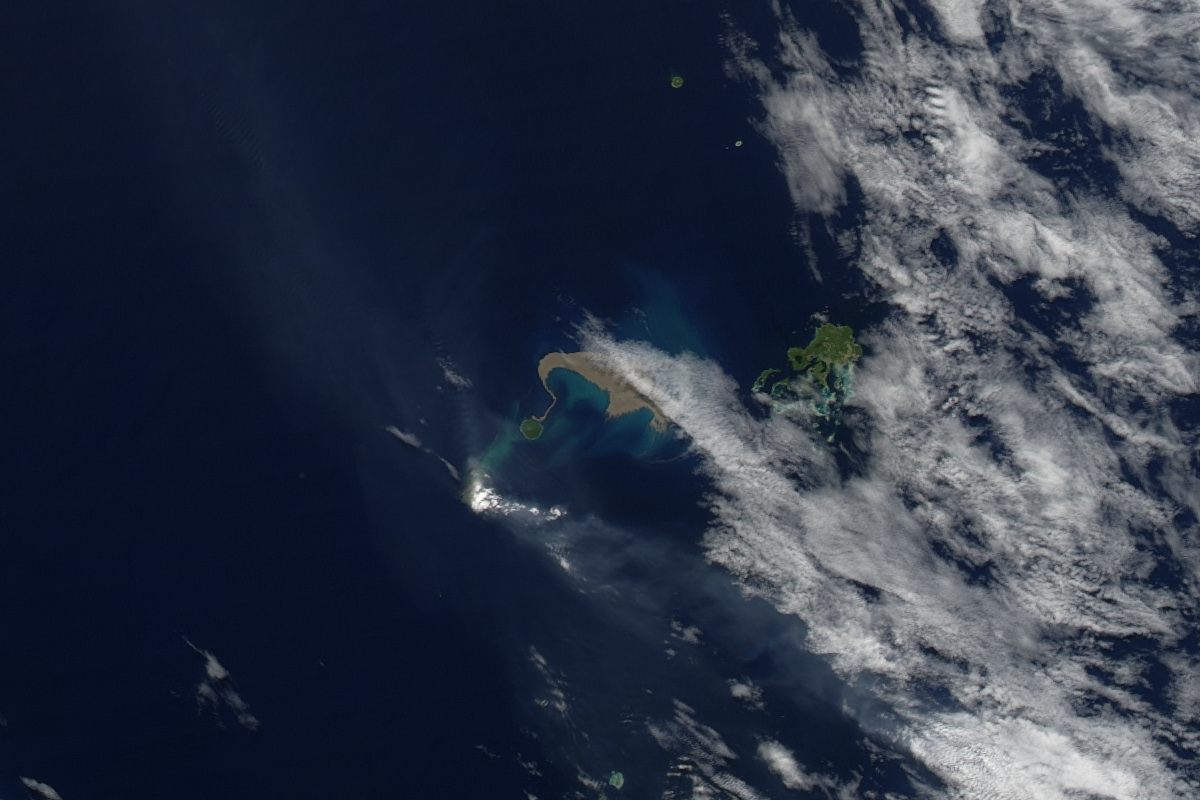Scientists Have Figured Out How Floating Islands Work
Spongy rocks don’t exactly act like sponges.

There are islands in the ocean that don’t show up on any map and that no one will also ever set foot on. Known as pumice rafts, these “islands” are made of volcanic rocks, and instead of being anchored to the seafloor they float wherever the currents take them. They can stay afloat for years (long enough to ferry small animals and seeds around the world), and scientists have long wondered about the secret of their longevity. New research is finally providing an answer.
Pumice rafts pop up after underwater volcanic eruptions. When the hot lava hits the water and cools quickly, gas bubbles are trapped in the rock, and chunks float to the surface. The pumice resists becoming waterlogged somehow, which keeps it afloat for a long time, and researchers have found that the rocks tend to sink at night and rise back to the surface during the day. Researchers at the University of California, Berkeley, used X-ray imaging to figure out just what is going on that makes the pumice behave so oddly. Their 3D images show that there are two forces at work.

First, water doesn’t completely fill the pores of the rock, like it does in a sponge. Even though those pores are connected, some are so narrow that the surface tension of the water traps gas inside, which provides the enduring buoyancy. The pumice eventually sinks when this trapped gas diffuses out through the rock. And the bobbing? The trapped gas explains this, too, since it cools and contracts at night, which makes the rocks less buoyant. The warmth of the day then causes the gas to expand again, lifting the rocks back to the surface.

Understanding, tracking, and modeling pumice rafts can help scientists keep track of underwater eruptions in remote corners of the ocean. Further, pumice rafts can be a nightmare for ships—ashy, pulverized pumice isn’t great for engines. Models can help ships steer clear, and a better understanding of when pumice rafts will sink only make those models more useful.























Follow us on Twitter to get the latest on the world's hidden wonders.
Like us on Facebook to get the latest on the world's hidden wonders.
Follow us on Twitter Like us on Facebook